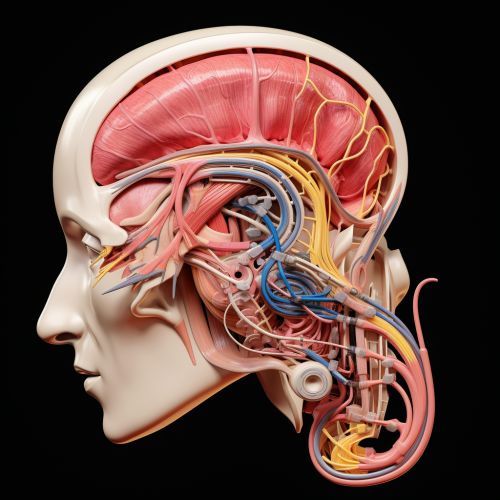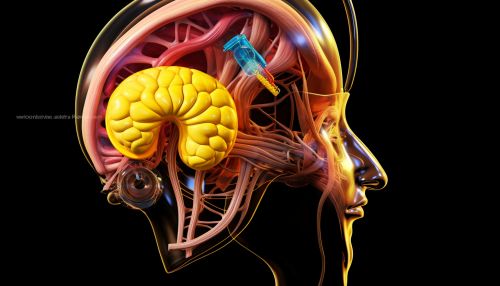Auditory system
Anatomy of the Auditory System
The auditory system is a complex sensory system that is responsible for the perception of sound. It is composed of two main parts: the peripheral auditory system and the central auditory system.


The peripheral auditory system includes the outer ear, the middle ear, and the inner ear. The outer ear consists of the pinna and the ear canal. The pinna is the visible part of the ear that protrudes from the head, and it helps to collect and direct sound waves into the ear canal. The ear canal is a tube-like structure that leads to the eardrum, or tympanic membrane.
The middle ear contains three small bones, known as the ossicles, which are the malleus (hammer), incus (anvil), and stapes (stirrup). These bones amplify the sound waves and transmit them to the inner ear.
The inner ear is composed of the cochlea and the vestibular system. The cochlea is a spiral-shaped structure that converts the mechanical energy of sound waves into electrical signals that can be interpreted by the brain. The vestibular system is responsible for maintaining balance and spatial orientation.
The central auditory system refers to the neural pathways that carry these electrical signals from the cochlea to the brain. This includes the auditory nerve, which transmits the signals to the brainstem, and the auditory cortex, which is the part of the brain that processes and interprets the signals.
Physiology of Hearing
The process of hearing begins when sound waves enter the outer ear and travel down the ear canal. These sound waves cause the eardrum to vibrate, which in turn causes the ossicles in the middle ear to vibrate. The stapes, the last of the ossicles, pushes on the oval window of the cochlea, causing the fluid inside the cochlea to move.
This movement of fluid causes the hair cells within the cochlea to bend. Hair cells are specialized sensory cells that convert the mechanical energy of sound waves into electrical signals. When the hair cells bend, they open ion channels that allow potassium and calcium ions to flow into the cell. This influx of ions generates an electrical signal that is transmitted to the brain via the auditory nerve.
The auditory nerve carries these electrical signals to the brainstem, where they are processed and relayed to the auditory cortex. The auditory cortex is the part of the brain that is responsible for interpreting these signals as sound.
Auditory Pathways and Processing
The auditory pathways refer to the series of neural connections that carry electrical signals from the cochlea to the auditory cortex. These pathways are bilateral, meaning that they exist on both sides of the brain, and they are organized in a tonotopic manner, meaning that different frequencies of sound are processed in different areas.
The primary auditory pathway begins with the cochlear nerve, which carries signals from the cochlea to the cochlear nuclei in the brainstem. From there, the signals are sent to the superior olivary complex, which is involved in localizing sound in space. The signals then travel to the inferior colliculus, which integrates auditory information with other sensory information, and finally to the medial geniculate body of the thalamus, which relays the signals to the auditory cortex.
In the auditory cortex, the signals are processed and interpreted as sound. This involves a complex network of neural connections and a variety of specialized brain regions. For example, the primary auditory cortex is responsible for basic sound processing, while the secondary auditory cortex is involved in more complex tasks such as speech recognition and music perception.
Disorders of the Auditory System
There are many disorders that can affect the auditory system and impair hearing. These can be broadly categorized into conductive hearing loss, sensorineural hearing loss, and central auditory processing disorders.
Conductive hearing loss is caused by problems in the outer or middle ear that prevent sound waves from reaching the inner ear. This can be caused by a variety of conditions, such as ear infections, earwax buildup, or abnormalities of the ear structures.
Sensorineural hearing loss is caused by damage to the inner ear or the auditory nerve. This can be due to aging, exposure to loud noise, certain medications, or genetic conditions.
Central auditory processing disorders are caused by problems in the brain's ability to process and interpret sound. These disorders can affect a person's ability to understand speech, especially in noisy environments, and they can also affect other aspects of hearing, such as the ability to localize sound in space.
